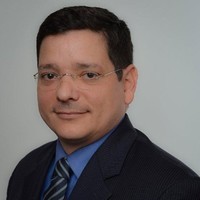Apr 26
2019
Technology Helps Mitigate Healthcare Disparities In Hispanic Communities
By Mario Anglada, CEO, Hoy Health.

Proven technology and digital communications are being used to leverage decades of health industry knowledge and speed access to care among Hispanic communities. These solutions and digital access align with Hispanic use of new technology tools: 84 percent of all Hispanics are online and Hispanic internet smartphone usage is 10.5 hours per week – 25 percent more than the national average.
Now, these innovative technologies are enabling a growing number of Hispanic consumers to access several cash-based primary care and pharmacy solutions, such as:
- A medication voucher program that gives consumers the ability to pre-purchase generic medications at affordable price points. They can be purchased for personal use or gifted to a friend or family member either domestically in the U.S. and Puerto Rico, or internationally.
- A free prescription savings card model allows cash-pay consumers to save a significant percent on brand name and generic medications across a wide network of pharmacies.
- An end-to-end clinical solution for patients with diabetes, hypertension, asthma, and obesity that includes vouchers for medications, peripherals, testing supplies, tablet, apps, and access to lifestyle coach consults.
- A bilingual telemedicine platform, which helps under served populations access the healthcare they need with more ease.
Solutions such as these are simplifying access and delivery of quality health and wellness products. Thanks to these technology platforms, individuals are enjoying improved access to care, opportunities to learn about their health, determine their wellness needs, purchase lower cost medications, manage their chronic conditions and engage in behavior modification solutions to help them lead healthier and more productive lives.
These solutions also give Hispanics access to products and services anywhere and at an affordable price, whether it’s domestically in the U.S. and Puerto Rico, or internationally in Mexico, Guatemala, Honduras and El Salvador, in either English or Spanish, and without the need for any type of insurance or third-party payment.
This level of innovation holds great promise for closing gaps in care for under- and uninsured Hispanics in the United States, meeting cultural needs and with respect for affordability of care.
The need for innovative healthcare solutions
Health and healthcare disparities — a higher burden of illness, injury, disability or mortality experienced by one group relative to another — occur across race/ethnicity, socioeconomic status, age, location, gender, disability status and sexual orientation.
In particular, Hispanics have the highest uninsured rates of any racial or ethnic group within the United States. In 2015, 19.5 percent of the Hispanic population was not covered by health insurance, as compared to 6.3 percent of the non-Hispanic white population. Experts predict that people of color will account for over half of the U.S. population in 2050, with the largest growth occurring among Hispanics.
This inequality impacts Hispanics and impedes advances in care quality for everyone, adding to avoidable costs. In fact, a recent analysis estimated that disparities amount to approximately $93 billion in excess medical care costs and $42 billion in lost productivity per year, as well as economic losses from premature deaths.
The growing Hispanic impact on the U.S. healthcare system
The microcosm of Hispanics accessing healthcare in the United States serves as an example of how the system fails the underserved consumer/patient. Rather than being provided care in a systematic way, they are lumped in with the general population, despite most of them experiencing a suboptimal experience in healthcare due to language and cultural differences.
Consider the following statistics related to Hispanic healthcare in the United States:
- 33 percent do not speak English well enough to navigate the current healthcare system
- 20 percent live under the poverty line and can’t afford basic primary care needs
- 50 percent more likely to die from diabetes or liver disease
- 23 percent higher incidence of obesity than Caucasians
- 24 percent higher frequency of uncontrolled blood pressure than Caucasians
Nevertheless, only seven percent of U.S. physicians are Hispanic.
Cost of healthcare and significant cultural/language barriers between Hispanic patients and their physicians have left a void in the accessibility of healthcare for an ever-growing population of Hispanics in the U.S. today.
Fortunately, innovative solutions are drastically simplifying access and delivery of quality health and wellness products and enabling Hispanic healthcare consumers to access care where and when they need it.